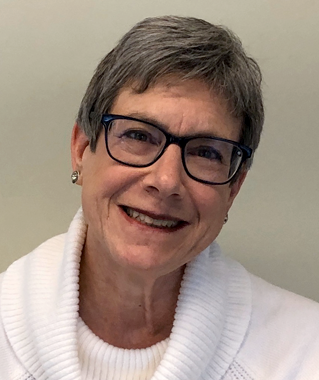
Mary Cunningham has fulfilled a career – and continues to do so– over several decades that quietly but powerfully bridges scholarship and devotion. American-born, Mary studied Eastern and Western church history as an undergraduate at Harvard University, supervised by the distinguished Ukrainian scholar Ihor Sevcenko. Moving to the United Kingdom for her graduate work, she received her MPhil and PhD in Byzantine History at Birmingham University, in the Center for Byzantine Studies. During those years, she joined the Orthodox church, met and married her husband Richard Corran, and settled in a small town outside Oxford. She raised two children there while also building an impressive career: teaching, lecturing, and supervising students at Birmingham University, Queen’s College Belfast, and especially at Nottingham University, where she continues now since her official retirement in 2016 in an honorary research position.
Mary’s scholarship has contributed to many areas of Byzantine history, focusing especially on homiletics (preaching), biblical interpretation, and liturgical life. Her most important work has long been on the doctrinal history, devotional piety, and liturgical celebration of the Virgin Mary. Here she has contributed not only to the study of Marian devotion in the life of the church, among the laity, but also in the history of monasticism – how and why Mary (woman, virgin, mother) became a figure of contemplative power for those who chose lives of religious devotion separate from family life in the “world”. Her publications are of profound scholarly significance, but she has also published for interested lay readers (for example, with St. Vladimir’s Seminary Press).
Here are two passages from Mary B. Cunningham, Gateway of Life: Orthodox Thinking on the Mother of God (St. Vladimir’s Seminary Press, 2015).
“Orthodox tradition is seamless in the sense that the Church has always attempted to incorporate those elements of faith that have truly been affirmed on the basis of discerning prayer and with the guidance of the Holy Spirit. However, this process took place slowly in the course of the centuries, sometimes in response to theological controversy or to external pressures. It is acceptable, in my view, to study this process and to attempt to unravel the various strands that eventually came together to form the rich portrayal of Mary, the Mother of God, that we find in Orthodox hymnography and iconography.” (pp. 20-21)
“Images of nature, daily life, and Biblical types (which are also frequently symbolic of creation) run through both hymns and homilies that celebrate the Mother of God. At the same time, this imagery evokes a transfigured creation: this is the natural world in which God himself is immanent. … Mary embodies the paradox that lies at the heart of Orthodox Christology: she represents both humanity and creation – in all their complexity – but she also contains the God who has emptied himself in order to enter into these fully. By means of liturgical poetry, narrative, and art, the Church defines Mary as that holy but richly diverse place where divinity and humanity come together.” (p. 196)


Mary Cunningham’s scholarly presence is marked by the sense of gentle quiet that pervades her person. Disciplined rigor and finely tuned technical skills mark her scholarship, as she navigates obscure Byzantine manuscripts, recovering long-lost homilies or devotional texts or hymns; producing critical editions of the Greek and elegantly lucid translations into English. Yet her work is marked by generosity, kindness, and deep attention to others: to her students, to fellow scholars and collaborators, to the general public who attend talks out of interest. She renders the scholarship accessible, in meaningful terms, for persons of faith. She mentors and guides. Her students speak of her abundant kindness in addition to the high bar of excellence she set before them. Her colleagues know well her commitment to inclusive, shared scholarship; to workshops and communal efforts that share the spotlight, grant attention to young scholars and those early in their careers, and those whose work has not received the attention it should. She never puts herself in the limelight. But she makes exciting, important, and long-lasting work happen.
Group photo taken in the Archbishop Iakovos Library at the Holy Cross Library.
Group photo (in the Archbishop Iakovos Library at HCHC) from the workshop entitled: "The Mother of God in Middle Byzantine Exegesis, Hagiography, and Homilies," held at the Pappas Institute for Patristic Studies at HCHC in April, 2023: Left to Right: Ioli Kalavrezou (Harvard U.), Tikhon Pino (HCHC), Rachel Smith (Villanova U.), Annemarie Weyl Carr (Southern Methodist. U., emerita), Susan Ashbrook Harvey (Brown U.), Mary B. Cunningham (Nottingham U., Honorary Associate Professor), Vasiliki Limberis (Temple University, emerita), Nancy Patterson Sevcenko (International Center of Medieval Art), Michael Legaspi (SVS), Archimandrite Maximos Constas (HCHC).
Susan Ashbrook Harvey is Royce Family Professor of Teaching Excellence and the Willard Prescott and Annie McClelland Smith Professor of History and Religion at Brown University. She specializes in ancient and Byzantine Syriac and Greek Christian traditions. She is a chanter and choir director at St. Mary's Antiochian Orthodox Church in Pawtucket, RI.



